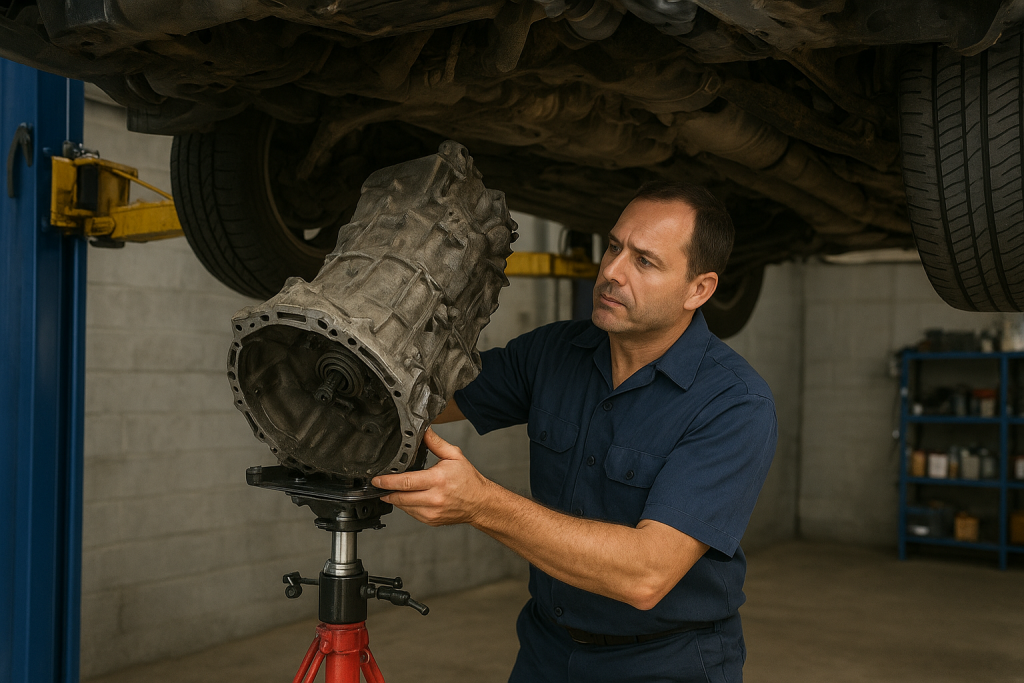
585.288.9070

585.288.9070
transmission replacement

Eagle Transmission Services has practical experience in automatic and manual transmission repair and in addition installing transmission rebuilds ! We have the ability to pinpoint the issue precisely and can replace particular parts if something needs to be fixed superior to our rivals. Our prepared technicians can diagnose the issue and get your car up and running once more, leaving you with satisfaction and a transmission that will last.
The point when a transmission quits living up to expectations, the likely reason is often found deep inside the component, and every now and again the most effective approach to handle the issue is to replace it. At the same time uprooting and replacing a transmission is a bit tricky.
Try to remember, transmissions aren’t just any old part. They’re a vital part of the car and a wide knowledge of automobiles, and additionally particular information of the methods needed to remove and replace a transmission, is fundamental. The following check list below might just give you an idea of only a portion of the steps that a specialist will experience to remove a front-wheel-drive automatic transmission:
Remove the battery ground cable
Disengage the under-hood electrical connectors to the transmission
Remove the front wheels
Move (or Remove) drive axles
Remove the dipstick tube
Disengage the cooler lines
Disengage the electrical associations with solenoids and sensors
Disengage the gear selector and throttle linkages
Remove the starter engine
Remove the exhaust channels and catalytic converter
Support the transmission with a transmission jack
Remove the crossmember backs
Disengage from chassis mounts
Remove the flexplate to torque converter bolts
Remove the bell housing to engine bolts
Remove the transmission
Now if that wasn’t enough depending upon the year, make and model of the vehicle you’re dealing with, the real rundown of things to do might be longer and with many more steps included. It also doesn’t take into account corroded jolts, rusty fittings and the obvious fact that transmissions can weigh hundreds pounds and are challenging to move in limited spaces – such as the engine compartment. Be that as it may once the transmission is out, the true work starts. Provided that the transmission is continuously swapped, the new transmission, either reconditioned or new, must be looked at. The front pump and torque converter likewise need to be reviewed and introduced, and all sensors, solenoids, valve form and filters changed out, swapped and checked. Assuming that an upgrade is suggested, the transmission is dismantled, every part is examined and measured, and worn segments are swapped, and additionally seals, heading and bushings. When everything is primed to go, the transmission is then reassembled.
Choosing whether or not to replace your engine or transmission, a lot of the same consideration’s apply. On the other hand, as noted, transmissions have a tendency to fizzle twice as frequently as engines. As it were, if your transmission fails at 100,000 miles and your engine is useful for 225,000 miles, it bodes well for a transmission replacement. Replacing the transmission is typically a simpler choice than replacing the engine.
Contact Eagle Transmission Service of Rochester, New York at 585-288-9070
services
online support
social
schedule
headquarters
headquarters
online support
Designed by : EXQUISITE MEDIA DESIGNS (c) 2025
Powered by : FRED-ERICK
Designed by : EXQUISITE MEDIA DESIGNS (c) 2025
Powered by : FRED-ERICK